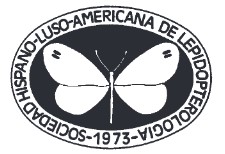
Electronic ISSN: 2340-4078
ISSN: 0300-5267
DOI: 10.57065/shilap
SHILAP Revista de lepidopterología, taking as its main reference the recommendations of the Committee on Publication Ethics (COPE), understands that the use of artificial intelligence (AI) and AI-assisted tools can be an auxiliary technology and a useful support, provided that it is used responsibly and prudently, its use is declared in detail, and its results are reviewed, corrected and accepted by humans. This duty of transparency is also in line with the principles of open science, which promote the traceability and reproducibility of research.
The ethical and responsible use of these technologies requires that control and supervision always be established by those who assume authorship, editing or review. These individuals must verify the accuracy, precision, validity, relevance and integrity of the material generated by AI, paying particular attention (although not exclusively) to invented references and biases that may be introduced by the design of the tool (inconsistencies, lack of information or sources, etc.), in order to avoid misinformation. Accountability for the use of AI tools must ensure analysis and disclosure of any limitations that may be detected.
The most common in the field of scientific publishing are generative AI and large language models. However, there are many other types of AI that can be used in the manuscript writing or editing and production processes, and even earlier, in the design or development of the research.
There is a wide variety of tools and technologies that use AI for editing, and many allow us to protect the content we add to them. Those that allow encryption of communication or stored information, deny authorisation for the model to be trained with our content, or work in controlled environments, whether on a local installation or on servers with privacy guarantees, as well as any other protective measures, should be used.
SHILAP Revista de lepidopterología requires authors to disclose whether they have used Artificial Intelligence (AI)-assisted technologies (such as large language models [LLMs], chatbots, or image generators) in the production of the submitted work. Authors who use such technology must describe, both in the cover letter and in the work submitted in the appropriate section, if applicable, how they have used it. For example, if AI was used to assist in writing, describe this in the acknowledgements section. If AI was used for data collection, analysis or figure generation, authors must describe this use in the methods. Chatbots (such as ChatGPT) should not be listed as authors because they cannot be responsible for the accuracy, integrity, and originality of the work; these responsibilities are necessary for authorship.

Electronic ISSN: 2340-4078
ISSN: 0300-5267
DOI: 10.57065/shilap